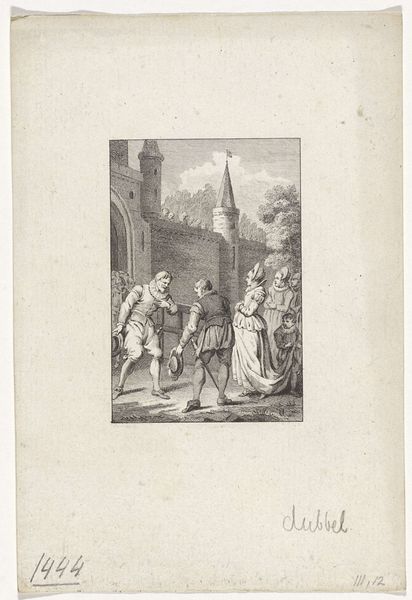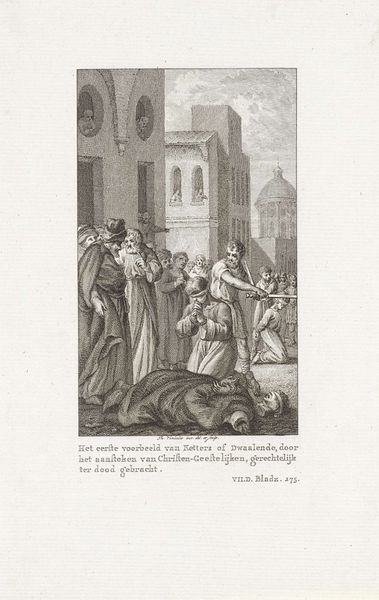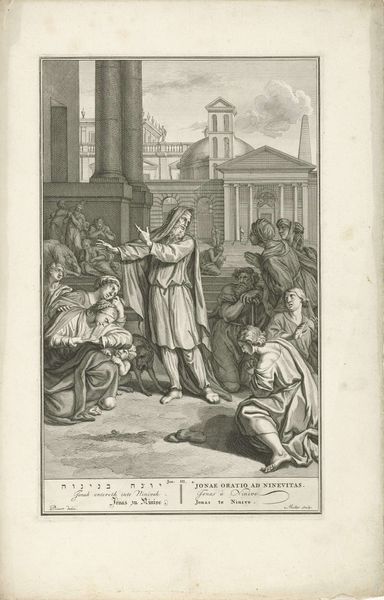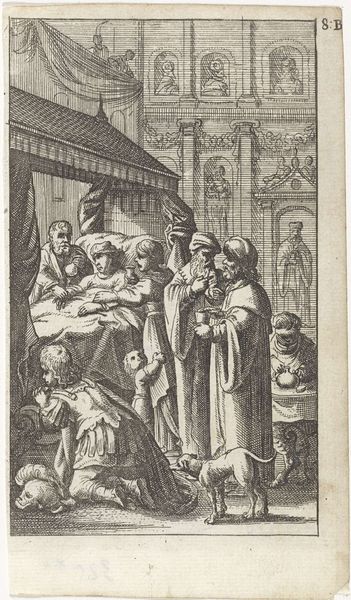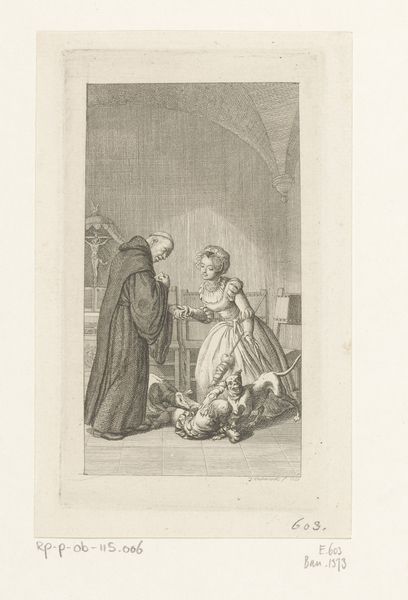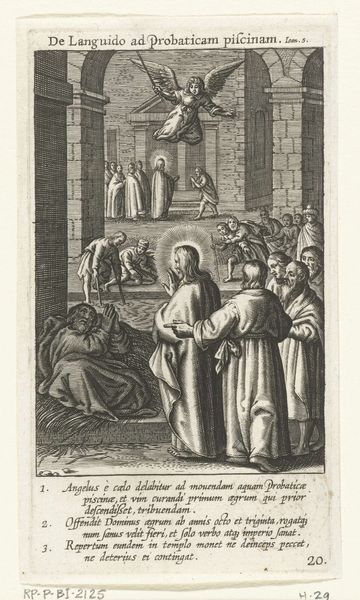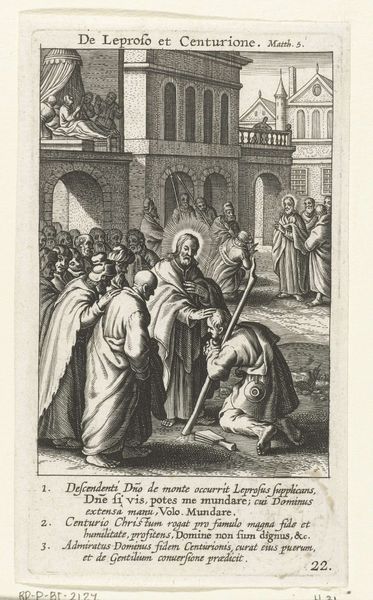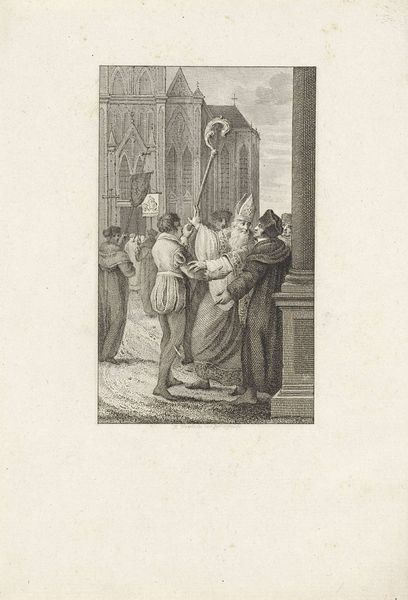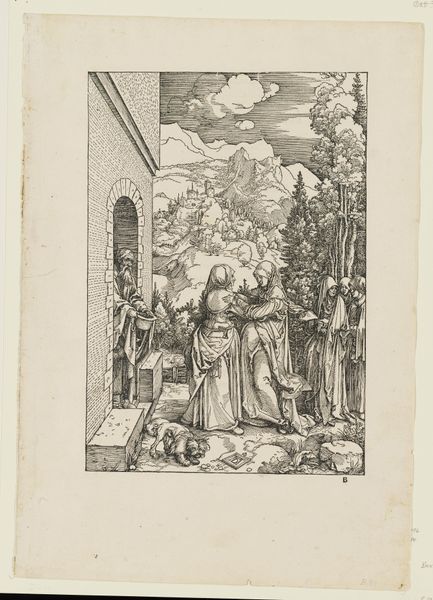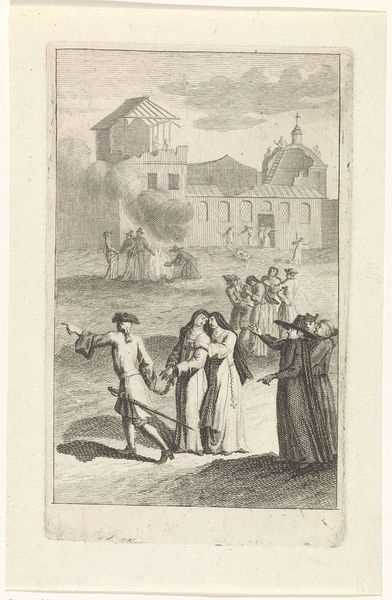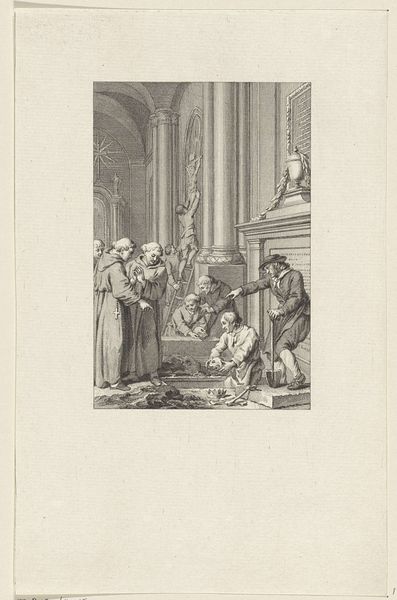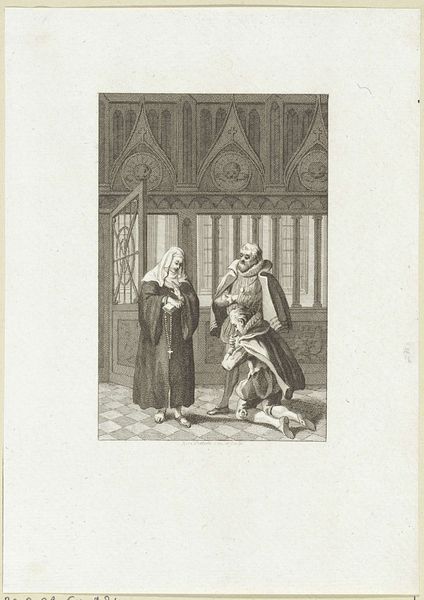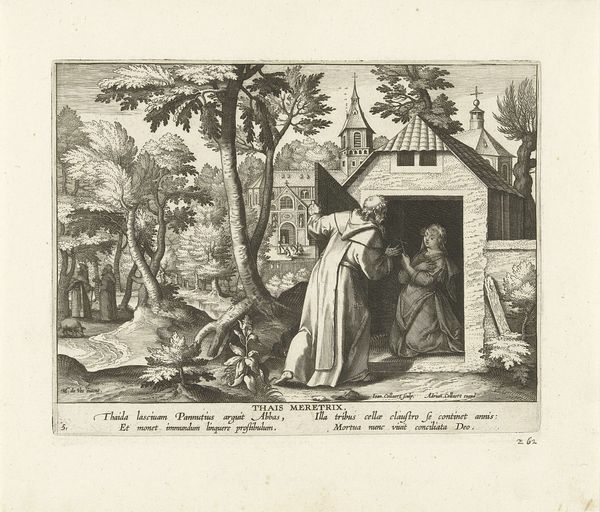
print, engraving
# print
#
cityscape
#
genre-painting
#
history-painting
#
engraving
Dimensions: height 230 mm, width 150 mm
Copyright: Rijks Museum: Open Domain
This print, "Droevig geval in de Willemstad, 1793," was created by Reinier Vinkeles using engraving, a printmaking technique that demands precision and control. Engraving involves incising lines into a metal plate, typically copper, with a tool called a burin. The depth and spacing of these lines determine the darkness and tone of the printed image. Ink is then applied to the plate, filling the engraved lines, and the surface is wiped clean. The image is transferred to paper under high pressure, resulting in a print with distinctive, crisp lines. Vinkeles would have needed a deep understanding of perspective and composition to convey depth and narrative effectively. The choice of engraving as a medium reflects the print's function as a means of disseminating information and commentary widely, at a time of social and political upheaval. The level of detail and artistry speaks to the value placed on skilled craftsmanship, even in mass-produced imagery. The work becomes evidence of the relationship between artistic skill, material processes, and the broader context of 18th-century Dutch society.
Comments
No comments
Be the first to comment and join the conversation on the ultimate creative platform.
